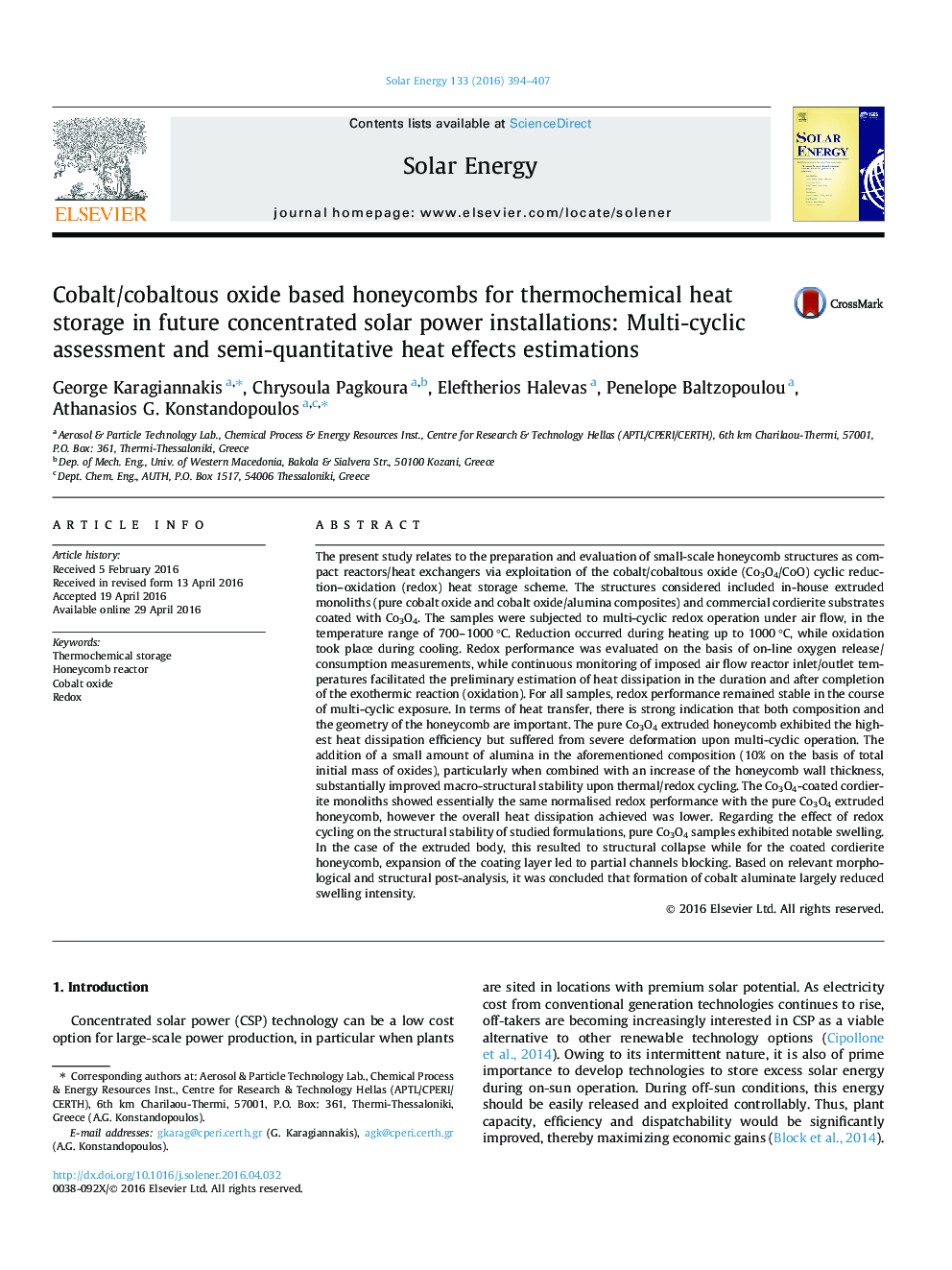| کد مقاله | کد نشریه | سال انتشار | مقاله انگلیسی | نسخه تمام متن |
|---|---|---|---|---|
| 1549357 | 1513085 | 2016 | 14 صفحه PDF | دانلود رایگان |
• Multi-cyclic evaluation of Co3O4 based honeycombs.
• Proof-of-concept of redox honeycomb reactor/heat exchanger for thermochemical storage.
• Al2O3 addition and honeycomb geometry tuning for thermomechanical stability improvement.
• Preliminary estimation of heat dissipation by imposed air flow.
• Structural and morphological characterization of fresh and used honeycombs.
The present study relates to the preparation and evaluation of small-scale honeycomb structures as compact reactors/heat exchangers via exploitation of the cobalt/cobaltous oxide (Co3O4/CoO) cyclic reduction–oxidation (redox) heat storage scheme. The structures considered included in-house extruded monoliths (pure cobalt oxide and cobalt oxide/alumina composites) and commercial cordierite substrates coated with Co3O4. The samples were subjected to multi-cyclic redox operation under air flow, in the temperature range of 700–1000 °C. Reduction occurred during heating up to 1000 °C, while oxidation took place during cooling. Redox performance was evaluated on the basis of on-line oxygen release/consumption measurements, while continuous monitoring of imposed air flow reactor inlet/outlet temperatures facilitated the preliminary estimation of heat dissipation in the duration and after completion of the exothermic reaction (oxidation). For all samples, redox performance remained stable in the course of multi-cyclic exposure. In terms of heat transfer, there is strong indication that both composition and the geometry of the honeycomb are important. The pure Co3O4 extruded honeycomb exhibited the highest heat dissipation efficiency but suffered from severe deformation upon multi-cyclic operation. The addition of a small amount of alumina in the aforementioned composition (10% on the basis of total initial mass of oxides), particularly when combined with an increase of the honeycomb wall thickness, substantially improved macro-structural stability upon thermal/redox cycling. The Co3O4-coated cordierite monoliths showed essentially the same normalised redox performance with the pure Co3O4 extruded honeycomb, however the overall heat dissipation achieved was lower. Regarding the effect of redox cycling on the structural stability of studied formulations, pure Co3O4 samples exhibited notable swelling. In the case of the extruded body, this resulted to structural collapse while for the coated cordierite honeycomb, expansion of the coating layer led to partial channels blocking. Based on relevant morphological and structural post-analysis, it was concluded that formation of cobalt aluminate largely reduced swelling intensity.
Journal: Solar Energy - Volume 133, August 2016, Pages 394–407
